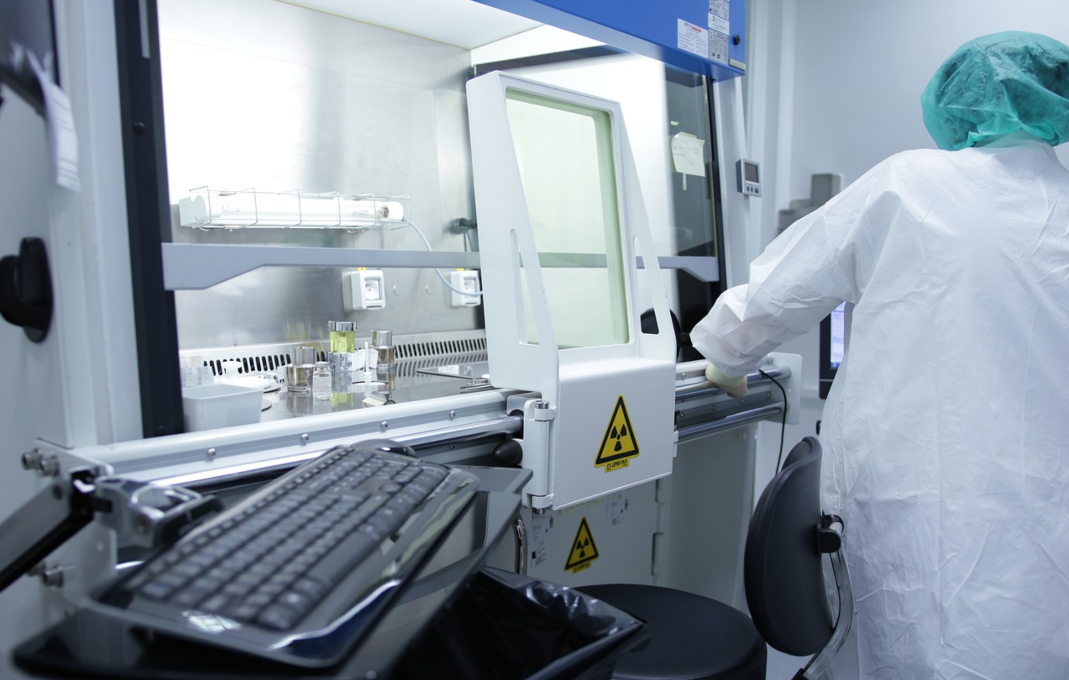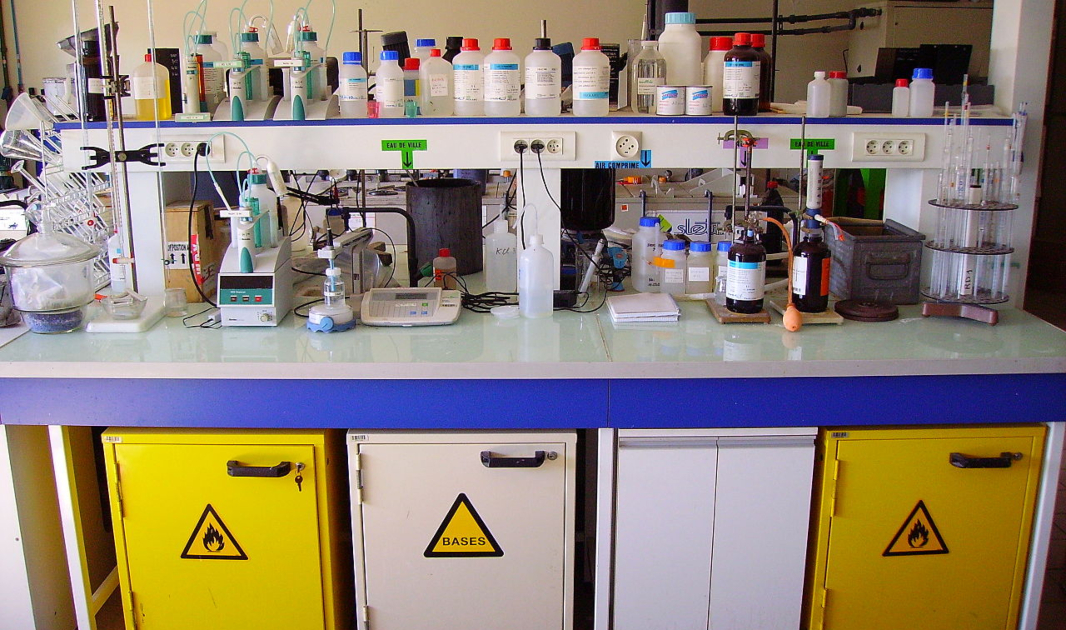Safety signs and symbols in the laboratory are essential for ensuring safety in any environment where hazardous materials or processes are used.
They provide a visual reminder of safety precautions to be taken and alert people to potential dangers. By being aware of your science laboratory safety signs and symbols and understanding their meanings, you can significantly reduce the risk of damage to your laboratory and its equipment, injury or illness due to unsafe practices.
In this Evolve blog, we’ll show you the most common laboratory safety symbols you might find in a laboratory, alongside their meaning.
The important safety signs in a lab
In any lab setting, safety is always the highest priority. Of course, it’s no secret that lab workers often execute dangerous tasks and handle lethal substances.
Therefore, maintaining high precautionary standards is essential to keeping personnel safe.
Displaying safety symbols in the lab gives employees and other personnel a visual reminder of safety protocols to follow and alerts them to potential hazards. This is especially important in research-based facilities where safety protocols must be followed strictly to prevent accidents or injuries from occurring.

The most common lab safety symbols
- General Warning
The “General Warning” symbol is ubiquitous in labs worldwide and alerts personnel, students, clients, vendors, or visitors of potential hazards. It can be found on doors, walls, cupboards, and above doorways. When encountering this symbol, it’s a reminder to exercise caution and awareness. Remain vigilant and respectful of the potential dangers in the area to ensure everyone’s safety.
- Biohazard
The “Biohazard” sign in a lab indicates that the instruments and lab have come into contact with biohazard specimens, posing a contamination risk. Biosafety levels are implemented to indicate the level of risk associated with the lab. To ensure safety, it’s crucial to wear appropriate personal protective equipment (PPE), gloves, goggles, or a full protective suit, depending on the biosafety level. Additionally, it’s essential to properly clean, disinfect and decontaminate instruments and follow specific rules to prevent contamination and maintain worker safety.
- Explosive Materials
The “Explosive Materials” sign in a lab indicates chemicals or agents with explosive properties, including dangerous chemical reactions from unstable explosives or combustibles. Every lab worker must memorise the respective safety protocols and calibrate equipment regularly. Strict fire and explosion safety policies should be implemented, including mandatory routine storage verification to ensure all chemicals are safely and securely stored, keeping everyone accountable.
- Flammable Materials
The “Flammable Materials” symbol on a lab’s door or walls indicates they regularly handle flammable materials. To ensure safety, lab technicians should store each substance in a location with stable temperatures under constant control and with correct, legible labels. Common flammable materials found in lab workspaces include solvents and cleaning materials with harsher or more abrasive ingredients. It’s important to keep these substances away from extreme heat, open flames, or any other agents that could cause them to ignite.
- Toxic Materials
The “Toxic Materials” symbol indicates the presence of toxic and lethal substances nearby, which can harm you if ingested, inhaled, or if they make direct contact with your skin. The toxicity of each agent varies depending on its type and concentration and the contact location. It’s crucial to have appropriate gear within reach when handling these substances, such as gloves, goggles, or respirators. Staff should always have the necessary personal protective equipment (PPE) and memorise safety protocols to ensure their safety.
- Non-Ionising Radiation
The “Non-Ionizing Radiation” symbol signifies that the lab regularly uses non-ionising radiation, which includes ultraviolet light, infrared, microwave, and radio frequency. If any of these apply to your lab, it’s important to properly mark all sources and implement measures such as biological safety cabinets, personal protective equipment (PPE), and environmental controls to limit exposure.
- Low Temperature
The “low temperature” symbol indicates the presence of extremely low temperatures or cryogenic hazards, which are typically associated with specific equipment such as ultra-low temperature freezers that use liquid nitrogen to reach their astonishingly low temperatures. When dealing with these agents, personal protective equipment is a must. It’s important to wear thick rubber gloves that extend to the elbows, closed-toe footwear, rubber aprons, and face shields for optimal protection.
Lab safety is of utmost importance, and understanding the different science safety symbols in your lab environment can be a critical factor in protecting workers and students from potential hazards.

Why school science labs need safety symbols
By displaying science safety symbols in a science laboratory in school, students can be immediately alerted to areas where hazardous materials are used and stored and understand what safety protocols must be followed. Displaying safety symbols can help prevent accidents or injuries from occurring.
Furthermore, it is essential for teachers or supervisors to clearly explain all safety protocols and the meaning behind each symbol so that students can adequately understand the risks associated with laboratory work and take proper precautionary measures when necessary.
In addition to providing visual reminders of safety precautions needed when handling hazardous materials, having visible science laboratory safety signs can act as a deterrent against vandalism or mishandling of items stored in the lab.
How Evolve can help
Evolve has you covered with our comprehensive range of laboratory safety solutions.
With our help, you can ensure that your laboratory remains safe for everyone who works and studies there! No matter what type of research or experiments are being conducted, being aware of safety protocols and following them diligently will protect all involved from harm.
Get in touch with the Evolve experts today, who will be able to advise you on all the safety signage your lab or facility needs.
You might also be interested in
Discover all of our latest news and insights from Evolve
Evolve is your trusted science partner
At Evolve, we have specific sector knowledge and tailor scientific solutions to your requirements by selecting and adapting our service offering, which includes:
- Facility design, laboratory supplies and lab furniture layout
- Expertise to help you make quick and informed decisions for all your clinical, scientific or analytical needs
- We can provide you with a comprehensive maintenance and support service
- We offer training in a number of areas of interest to the scientific community
Our proactive, consultative approach is underpinned by the expertise of our team of dedicated professionals, ensuring that you’ll get personal support from one of our experts.
If you need to speak with someone from Evolve, please visit our Support Centre page.


